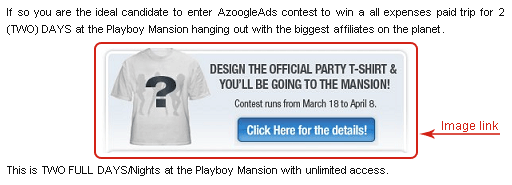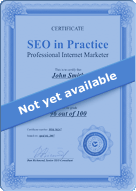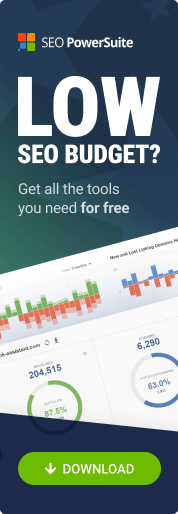Now as promised, I'll teach you how to choose links to buy.
First: Topic of the site
Let's recall the first Q–factor of links that I mentioned: Relevance of your and your potential partner's site. It's not just good–to–look–at. Relevance is crucial when you're getting links, because (and this we also discussed):
- Search Engines trust links between sites whose topics are close (like pets to buy and pets food).
- People only follow links if they're interested in what they say (remember I told you — a visitor of www.vegetarian.com isn't likely to follow a link to a meat product wholesaler).
Therefore, make sure that the site's topic suits you.
Second: Site's traffic
If you contact site's owners, some of them will tell you how many visitors they have, say, per month, or daily. Think that a small per cent of these visitors will also come to your site — if this site links to you. Then, some of these people will decide to pay for what you sell. So think how much you expect to earn and if the link will pay for itself.
Sure when you're paying for a link, it must pay you back. If not, you don't need to waste your money on it. Therefore, test your links all the time. Don't ever forget to check how much value they really bring (traffic, or whatever you're getting them for). If the link doesn't work as you'd want it to work, stop throwing money down the drain.
Third: these are the remaining quality factors a good link is made of:
- Right anchors
- Good context for links
- Keywords in title and body of the partner's page
- PageRank
- How many outbound links a page has on it?
- Age of the partner's site
- Link popularity of the website and the webpage
These factors are more important for SEO, of course. But when you're paying for a link that's supposed to bring you traffic — why not think SEO a bit, too? ;)
Fourth: the type of the link
Basically, here I mean the way the visual representation of the link will look like.
1) You can have a link that is a purely text link, like here:
This kind of link is useful for your rankings, if you're using your keywords in the anchor text.
2) This can be a text link standing within other related text. For example, a link with a description, like we discussed many times when talking about link quality factors.
Wild Ties
Over 5,000 Mens Designer and Novelty Neckties, Bow Ties and Accessories at Great Prices. Silk ties, holiday ties,
animal ties, etc.
That's even better than a pure text link. Besides having keywords in the anchor text, you can put keywords into a description — and this makes your links even more Search Engine friendly.
3) This can be a text link standing within other related text.
Here's an example: a blog post where links with anchors SEO and text link are naturally blended within relevant content.

Example of a text link blended in context
Such links can be even more useful than links with a pre–defined description, because the context where they're placed is totally unique.
4) It's possible to have an image link. Like this banner for example:

Example of an image link
This looks great and sometimes can get more people clicking on it than a text link. It really makes sense to buy banner links from a traffic–rich site, if you want to drive some visitors to your own webpages. But for the SEO purpose, there's not much use of a banner. Unlike a text link, this kind of link doesn't help you rank higher for your keywords. Search Engines don't read images yet.
Fifth: on what pages of the site the link will be placed
Again, I mean there can be sitewide links — coming from all pages of a site, homepage links — coming from a site's index page only and links from inner pages. They have different SEO value and bring different traffic (that we discussed in Chapter 4.9 Look where the link can be placed).
How do you find where to buy links?
Sure, you can find good topically related sites yourself — or go and find a broker at special Web sources. Here're just a few of them:
http://www.textlinkbrokers.com
http://www.text-link-ads.com
http://www.linking-service.com
http://www.one-way-link.info
http://www.linkbrokeronline.com
And you can find more on the Web, for instance if you search for the keyphrases buy one–way links, or link broker.
They work pretty much the same way as sources where you can find a reviewer to write about you (remember we talked about this earlier in part 6.1?). They've got a large base of sites, specializing in different areas, that sell links. As you come to a broker like this, they (or you) search for most relevant sites that might link to you and in fact arrange for them to sell you the links. So quite often about half of the sum you pay goes as a commission to the broker's site.
I guess a question like this will be natural: And how do I find quality link partners myself? What if I don't want to pay to any brokers and middlemen?
Sure there is a solution that's much cheaper and far more reliable: your personal software tool to search for high-quality links. This is SEO SpyGlass. You can download it right now from here. And go further to see how it works.

